Small Business Marketing: How 2-4x Your Income on $300 or Less

You flip open your laptop.
Your stomach churns.
You know you needed blog posts, 1000 Twitter followers, and a SEO-optimized website yesterday.
Your head is swimming with marketing to-dos and jargon.
And it feels like the small business marketing game is always changing on you.
New SEO rules.
Google ads outdoing social media posts, social media posts outdoing video marketing.
You want to get ahead
But you’re not even sure where to begin.
Should you go for Google ads over lead-generation emails?
And what will it cost?
You want to do things right.
But you’re starting to feel completely overwhelmed.
You’re new to the world of small business marketing.
And you have the shoestring budget to match.
Luckily, you can safely throw out the jargon, the eye-watering ad fees, and the pie-in-the-sky marketing strategy.
Effective small business marketing is a lot simpler that it feels right now.
And our ultimate small business marketing guide is here to show you why.
Below, we walk you through the marketing tactics you need to 2-4x your income on $300 or less.
H2 Replace The Gut Churn with Confidence: Mapping out a Bullet-Proof Marketing Strategy

All good marketing begins with a solid marketing strategy. What is a marketing strategy? It’s your basic roadmap to generating leads, customers, and profit for your business.
Market Business News defines a marketing strategy as:
“…All of a company’s marketing goals and objectives combined into a single comprehensive plan. Business executives draw a successful marketing strategy from market research. They also focus on the right product mix so that they can get the most profit.”
All great marketing begins with a marketing strategy. When hashing out your own – where should you begin? How do you know which direction to take, and which strategies will work best for your target customers?
You get them to tell you.
Here’s how.
H2 Wave Goodbye to that Knot in Your Stomach with a Bullet-Proof Marketing Strategy for a Small Business

As content marketing specialist, Kristina Halvorsonsaysnotes, “Nobody knows better what your customer needs than your customer.”
That’s why solid research on your customer base is the foundation of any successful marketing strategy.
We often think we know what our customers want – this is your specialty, after all. But market research can uncover some important, overlooked details about your customers’ wants, needs, pain points, and motivations.
The term “market research” can sound costly. But don’t fret. You don’t need a team of top-notch data analysts and expert researchers to uncover how your target customers see the world.
You can undertake market research on a small budget.
The best way to do this?
Imitate.
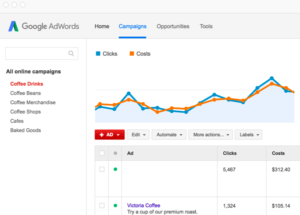
Screenshot from Google Ads.
Corporate greats like Google, spend millions of dollars on market research every year. Google Trends can help you gain snapshot insights into the search interests of your target market. You can also emulate Google’s tried-and-tested market research techniques by creating surveys with Google’s Marketing Platform. If you already have a small circle of customers, call, or email and ask them to answer a few survey questions.
However, don’t make the mistake of thinking you only need to undertake this research once.
Your metaphorical clipboard of carefully-crafted marketing questions should never sit and gather dust at the bottom of your marketing toolkit. Undertaking market research every 3-6 months is a great way to ensure you’re savvy about your target customers’ ever-evolving needs and desires.
Once you’ve gathered your research, you can use the data you find to craft targeted buyer personas to guide your marketing:
“A buyer persona is a semi-fictional representation of your ideal customer based on market research and real data about your existing customers. When creating your buyer persona(s), consider including customer demographics, behavior patterns, motivations, and goals.”
Buyer personas are the blueprint for fleshing out your marketing strategy; use the insights you gained from your research to develop fully-formed personas of you target customers. Turn to your personas when crafting all of you marketing materials.
H2 Building a Killer Marketing Strategy: Break Your Marketing Strategy Down into Smarter Goals

Social media posts, flyer design, and prospecting calls. What are the most important marketing to-dos you need to fulfill to meet your business goals for the week?
Prioritize your tasks and organize them in order of most important; put the top tasks at the top of your list: the AM Monday-Tuesday, and list the minor tasks for the end of your week.
Prioritizing and organizing your weekly marketing tasks in this way, beaks down your goals so that they become specific, measurable, attainable, relevant, and time-bound (also known as SMART goals).
Seminal research by Edwin Locke found that goals that matched this criterion had a far higher chance of success.
For example, when designing your marketing strategy you can designate a specific, time-bound goal for your marketing team to reach – such as, “8 new customers by the end of August.”
H2 The Best Digital Marketing Avenues for Reaching Your Target Customers
https://www.youtube.com/watch?v=Z_KspIX1oXU
From SEO hacks to snappy social media content, digital marketing is an economical and effective way to get your brand out there. Let’s jump in.
H2 Your Website: The Face of Your Brand

A professional website is the face of your brand.
As such, it’s important to have a modern, easy to navigate, SEO-optimized site.
Luckily, you don’t need to fork over a month’s worth of revenue for a professional website designer.
There are several online website design providers you can use to design an impressive website.
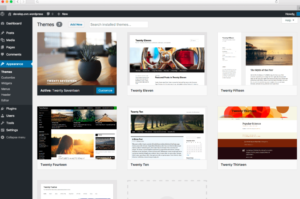 Screenshot from Press Customizr.
Screenshot from Press Customizr.
WordPress is a great place to turn for a sleek and cost-effective website. You can easily create an eye-catching site with a professionally-designed theme optimized for desktop and mobile.
WordPress also prioritizes SEO optimization, providing step-by-step advice on how to win over the search engines with your site copy and content.
Not only that:
You can also use WordPress’ in-built analytics feature to measure your traffic and tweak your site to draw in more prospects.
In comparison to build-it-for-you website providers, like Squarespace, WordPress works out cheaper in the long run.
Why?
Because you don’t have to pay a regular monthly fee to keep your site running. You’ll only pay for your web hosting each year, totaling a grand: $15.00 per month.
When factoring in the cost of a WordPress website, you need to set aside cash for:
- WordPress hosting: around $10.00 per month.
- A unique domain name (the name of your site): typically $15.00 per year.
- A stylish WordPress theme: from $100-$500– based on design and features.
Need extra help setting up and managing your site?
WordPress offer optimization and support packages. The Premium, Business, and eCommerce packages are excellent packages to check out if you’re a small business owner: starting at $9.00.
H2 Content Marketing: Sell Without Selling

As one of the sneakiest and most effective forms of digital marketing, content marketing is gold-dust if you’re a cash-strapped small business owner.
If you make content marketing a mainstay in your market strategy you’ll see 7.8X more traffic.
As if that’s not enough…
Content marketing gets you more, for less. Check out your potential ROI (calculated by Content Marketing Institute word-magician Julia McCoy):
“Content marketing costs 62% less than outbound marketing, it generates more than three times as many leads.”
After drawing more traffic to your site, you can use content marketing to draw your prospects further down your marketing funnel.
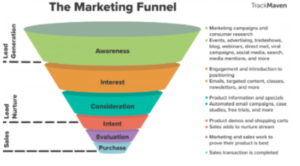
Screenshot from TrackMaven.
Here’s how it works:
- You provide value-driven, actionable content that solves the key pain points of your target market and helps them achieve their goals.
- You demonstrate the value of your brand, building your reputation as an expert in your speciality – without the hard-sell.
- This builds rapport and trust with your prospects.
- This draws your prospects further down your marketing funnel.You can speed up the process by encouraging readers to subscribe, or incorporating a lead magnet (a free piece of content that you send to readers, in exchange for their content details and permission to add them to your emailing list).
You’re selling without selling.
Delightfully sneaky – eh?
H2 Why You Might be Better Off with No Content at All
I know what I said, but…
Content marketing only works if you do it well.
Whatever you do, don’t hash out bland, research starved, cliché-riddled content, that would leave any respectable grammar Nazi grasping for a paper bag.
Because then all you have is bad content.
And bad content is just embarrassing.
Bad content will make your readers cringe and drag down your reputation.
No content is better than bad content.
How you trade bad content for good content?
Follow this list…
Great web content needs to be:
Personal: are you meeting your prospects’ unique needs?
Actionable: is it clear how your readers put your advice into action?
Easy-to-read: aim for conversational, over Chaucer.
Fun: engaging content should get your readers past the first line, and keep them reading from there.
SEO optimized: how else will Google find it?
Avoid writing clichés: the grass is not always greener.
How do you choose content topics that appeal to your target audience?
Before you write anything, always ask yourself:
What do my target customers need to read right now?
Each piece of your content marketing strategy should work together like a puzzle piece. Each piece of content should solve a key pain-point or helps a potential customer fulfil a goal.

Bounce back to your market research and customer personas to help you get super clear on the goals and pain points of your target customers.
Beef up your understanding by:
- Researching the most popular posts your competitors have written (check the number of comments and shares or the sidebar for popular posts to uncover them).
- Asking about customers concerns and interests on social media– head to your ‘Instagram Stories’, Facebook, or Twitter feeds.
- Roll out surveys– dig deep into your prospects and current customers key pain points and ambitions.
When it comes together, maybe it will look a little something like this…

Screenshot from Harper’s Bazaar.
Imagine you’re the owner of a cool, independent jewellery brand, the blog post headlines in your “most popular” side-bar probably read something like:
- “How to Take Care of Your Jewellery: 10 Tips for Gems as Good as New.”
- “Silver, Rose Gold, or Gold: How to Choose Jewellery Based on Your Skin Tone.”
Next up? Keyword research.
Each piece you write needs to rank for primary and secondary keywords in your niche– so the right people can find it.
Keywords are the search terms people type into Google.
You can use a keyword tool, such as WordStream’s free keyword tool, to find both primary and secondary keywords.

Screenshot from Wordtracker.
After you’ve settled on your keywords, it’s time to optimize them to rank in the search engines:
- Include your primary keyword at the beginning of your headline. In the first 100-200 words, and in at least one of your subheads.
- After you’ve finished your post, go back and sprinkle secondary keywords throughout your post. Don’t ‘stuff’– you only need to add each keyword once.
- Include your keywords in your meta tags; including your meta description and alt text of your posts’ images.
https://www.youtube.com/watch?v=MdM5ffszJEA
Your posts will only rank highly if you pair your content with a basic, strategic content marketing strategy.
Here’s how:
- Research your competition: Pull up posts that rank well for your primary keyword on Google.
- What’s good about their post?
- What do their headlines look like?
- What information have they included?
- Where could you fill the gaps in knowledge they’ve left?
- How do they use visuals?
Jot down what works well with each post and use this to inform your own content.
Don’t steal.
Use the ideas you find to create something better.
When it comes to style, images, and ideas:
Take the good, leave the bad, and fill in the gaps.
H2 New Customers are Just a Tweet Away

Not only is social media free.
Better yet…
It’s one of the best ways to get yourself in front of your target market.
As a small business owner, say hello to your potential reach:
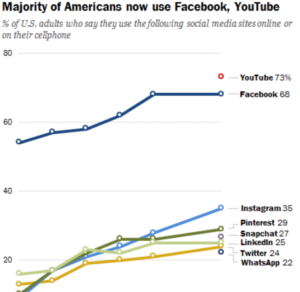
How can you rock your social media marketing?
– Humanize your social feeds put up snaps of you and your team at work. This helps build trust and likability and brings warmth to the cold world of business.
– The best social media campaigns are consistent: post one-two posts across each of your platforms each day. You can schedule these in advance with a social media automation tool – like Buffer.
– Don’t post and run. Reply to comments and questions on your posts. Comment and like your followers’ posts; engaged customers arise from an engaged company – not just a business who is only interested in them when it serves their needs.
– Keep it consistent: use similar brand colors, photos, and style on each of your channels to create a strong brand identity.
https://youtu.be/wmpFt7Vhk7ELink to a short video on Facebook marketing.
– Don’t forget your hashtags: hashtags get you found by your target customers – always add some to your post before you hit “upload”.
H2 Have a Grin on Your Face by Friday: Don’t Neglect Your Outbox
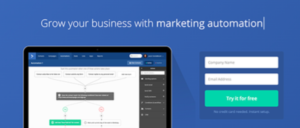
Screenshot from ActiveCampaign.
What’s the fastest way to get new business?
Email.
64%of small businesses crowned email marketing their most effective marketing technique.
On top of that…
Email is 40x more effective than Facebook and Twitter combined for scoring new customers.
Email marketing also offers an impressive ROI – with an average return of $44 for every $1 spent.
Oh hello.
It’s even good for the customers you already have.
Consistently reaching out to customers via email will keep them engaged with your brand – keeping them a click away from their next buy.
How do you ensure envy-inspiring results from your email marketing campaign:
- Build your list. Set up lead capture forms on your website to build a list of leads to nurture.
- Segment: segmenting refers to breaking up your prospects and your customers based on their past actions.
Different people in your list, need a different nudge in the direction you want them to go.
- Business emails are made for two things: offering value and building relationships. Supply your segmented prospects with value and charm.
A personal and conversational tone performs the best. Provide helpful tips, discount codes, promotions, and free downloads.
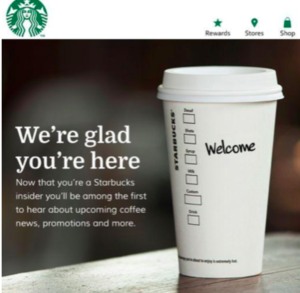
Screenshot from Starbucks.
- Copy should always be easy to read, short and sweet, and include a clear call to action– such as linking out to your new blog post or an item on sale.
- Copy should make them feel something: what are some of the emotions your target clients may be struggling with?
- If your selling personal training services, they may feel demotivated, frustrated at their lack of weight loss, or intimidated by the work-out process.
- How will they feel after using your PT services? Energized, inspired, confident – proud? Get inside your prospects’ inner world and tap into these emotions when writing your copy.
- Stuck for content inspiration? Look in your inbox. Which emails do you actually open? What can they teach you about writing a better email?
- Make a monthly calendar with weekly, scheduled times email content. Regular emails win customers.
- You can use email automation and CRM tools to help you plan, automate, optimize, and analyze your marketing emails. Small business favorites include HubSpot and Active Campaign.
- Finally, measure your results using data analytics to find out what is and isn’t working – adjust accordingly!
H2 When It’s Better to Spend Rather Than Cut Costs
While you may have to dive deep into your pockets to foot the bill, paid ads are definitely worth the investment.
Here’s why:
“Consumers exposed to display ads are, on average, 155% more likely to search for brand- and segment-specific terms.” – Main Street ROI.
While there are several paid ads to choose from, including Facebook and LinkedIn. When it comes to getting started with paid ads, we recommend going with Google.
The Original in Paid Ads: Go with Google

Screenshot from Google Ads.
As the most visited search engine, boasting 73%of all internet searches in 2018, Google is the place to go to get your ad seen.
Google offers two forms of paid ad:
- Google AdWords provide targeted display ads to users browsing related websites. AdWords also offer text ads that pop up at the top or the side of Google’s search pages.
- Pay-per-click (PPC) ads charge a fee every time someone clicks one of your ads – allowing you to buy visits to your website.
To make up the money you put down, you’ll need to write an ad that’s seductive enough to pull Google searchers away from their search bar.
How do you do that?
Highlight the benefits.
What are the benefits of your business? What kinds of results have you generated for your past customers? Do you have 5* reviews to show off?
Brainstorm the key selling points of your brand and feature these in your ad to boost your click-through rate.
Check out how page-one copywriting business Clear Writing talked up their key selling points:

Screenshot: Google Ad from Clear Writing.
After you’ve drafted up some snappy ad copy, it’s time to add in your keywords.
What do your prospects search for when looking for a company just like you?
You can use Google Ads Keyword Planner to uncover the top keyword searches connected to your business.
You might be tempted to hoard the most popular keywords.
Sadly…
That’ll get you lost on the 8thpage of Google – as you’ll be going head to head with competitors who can put down more money per click.
Which keywords should you choose? Niche, long-tail keywords with less competition.
Niche keywords are highly-specific keywords that relate to a narrow, specialized niche.
Check out these niche keywords for the organic baby supplies niche:

Screenshot on ‘niche keywords’ from WordStream.
H2 Why You Don’t Actually Want to Be the ‘Best’ Option
You know what your customers are looking for, right?
Obviously, they are looking for the top of the hierarchy.
The most raved about.
The most in-demand.
You’ve got to be the best to be known.
And to beat the competition.
Actually, this isn’t so.
Customers aren’t looking for the best option, they’re looking for the least risky option – as Chris Doat the Futur notes.
They want to know you’re a safe bet.
That they aren’t just wasting their money on you.
How can you convince them?
Actively shape your reputation through social proof:
- Reviews: Reviews are a super simple, super-effective form of social proof.
- Influencer interest can go a long way in boosting your reputation. Maybe a popular Instagram influencer features your PR samples on their feed. Maybe a cool blogger in your niche has shared one of your blog posts on their Twitter feeds. Highlight the interest by resharing posts and comments, and mentioning influencers, on your social media feeds.
- Podcast features: Podcasts are a great way to reach thousands of potential new prospects in your market.
Getting featured on one is easier than you think. Neil Patel notes that you need just two elements to win podcast hosts over emotion and unique slant.
Neil provides the example of Brenda Gagne, “A former 3rd-grade teacher and mom of 3 becomes a successful entrepreneur.” Deliver a story that hits both of these notes and you’ll spike your chances of being featured.
When dreaming up the right podcast for you, consider the unique value you can offer listeners.
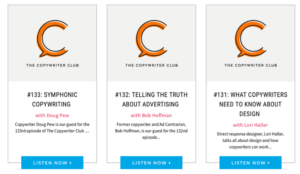
Screenshot from The Copywriter Club.
The Copywriter Club, a popular podcast for small and medium-sized copywriting businesses, features copywriters covering unique angles, such as tips on the design, the ins-and-outs of the financial copywriting niche, and advice on how to find retainer clients.
Find podcasts here.
- Awards: from food awards to creative design awards, a Google search will likely bring up a selection of competitions and submissions for awards in your market.
Offline Marketing: Proven Strategies to Skyrocket Your Revenue
While digital marketing can bring great returns for a small budget. Offline marketing allows you to get in front of your customer wherever they are.
Below, we breakdown the best offline marketing strategies for a small business budget.
Let’s jump in.
Posters
Print Place highlights the stellar benefits of marketing with posters:
“Poster campaigns are a smart way to get a message to a large group of people. They can be an excellent tool for gathering a large number of first impressions in areas with high foot traffic. Posters are also relatively cheap and easy to switch out when it’s time to update your message.”
Leave your posters wherever your target customers kill time. For example, if you’re selling a health food supplement, you may find your ideal customer hanging out at the gym or health food store.

Screenshot from Print Place.
Posters are all about etching yourself in your prospect’s memory with striking visuals, a few punchy lines of ad copy, and clear contact details.
H3 The Little-Known Secrets to Leaflets: How to Get Your Prospects to Step Away From the Trash Can
Realistically?
Only 15% of your leaflet is likely to get read.
As the word wizards at Copybloggernote, “On average, 8 out of 10 people will read headline copy, but only 2 out of 10 will read the rest.” A seductive headline is the deciding factor on whether your leaflet gets glanced over or tossed in the trash.
So, how do you get people to actually read them?
It’s all in the headline
Luckily, Copyblogger have given us a fool-proof, 3-step method to acing them.
According to Copyblogger, enticing headlines:
- Make your reader feel something: amusement, excitement, suspense
- Highlight a clear benefit to reading the rest of the leaflet
- Suggest that this benefit is unique to your business
So if you were a green-fingered solar panel connoisseur, your business leaflet’s headline would read something like this:
“NewStar Solar saved Ohio businesses 30% on their energy bills in the last 6 months.”
Now you’ve hooked them in, here’s how to keep them reading:
- Highlight the key benefits of your service or business
- Back up your claims with evidence. Think case studies, statistics, and raving customer testimonials. Evidence takes your pitch from bragging to showing real value.
- Include unique images (step away from the stock images)
H2 Networking and Event Marketing

Last, but not least:
Event marketing.
Event marketing refers to promoting your business by attending or hosting an in-person event.
Hosting an event can be a great way to present yourself as an expert in your niche.
Alternatively…
Attending events in your niche opens you up to potentially lucrative relationships with prospects, other business owners, and industry influencers.
When drawing up your networking strategy, don’t just limit yourself to prospective clients. Other business owners are a wealth of support, inspiration, and new business.
Fellow business owners can bring you fresh insights, be your greatest cheerleaders, and connect you with potential customers through business referrals.
To find events in your niche, Google phrases such as, “business events in (your niche),”, or “marketing events in (your niche).”
H2 Small Business Marketing on a Shoestring Budget
The world of marketing is in a constant state of flux. It’s easy to feel overwhelmed as a small business owner with a limited budget.
Luckily, you don’t need to read a stack of marketing books – or dig deep into your pockets in order to see big returns.
Marketing no longer needs to fill your stomach with a tornado of dreaded butterflies. With a combination of the right strategies and proven marketing tactics – including digital, in-person, and offline, you’ll soon watch the money roll in.
Where to begin with your newfound tools and strategies?
To kickstart your small business marketing plan set up marketing performance management software, such as Hive. You can use Hive to plan out your weekly tasks, delegate tasks to team members, and analyze the results.